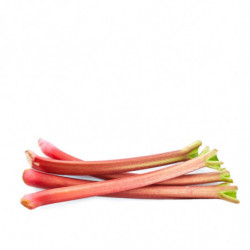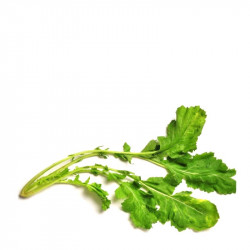Purple Carrots: Culinary, Historical, and Nutritional Information
Purple carrots are one of the oldest carrot varieties, with a rich history dating back thousands of years. While today we are more accustomed to seeing orange carrots, purple carrots were the first to be cultivated. Native to Asia and the Middle East, these carrots stand out not only for their vibrant color but also for their unique nutritional properties, making them a superfood in any diet.
Origins and History of Purple Carrots
Purple carrots originated in Afghanistan over 5,000 years ago, where farmers grew this root mainly for its medicinal properties. Initially, carrots were not used as food but rather as medicinal plants, and their seeds were used for therapeutic purposes. Ancient Persians and Egyptians cultivated purple carrots long before they reached Europe.
It wasn't until the 17th century that orange carrots, genetically modified by Dutch farmers, became popular, relegating purple carrots to the background. However, with the rise of exotic and healthy foods in recent years, purple carrots have regained popularity due to their antioxidant properties and visual appeal.
Biological Characteristics of Purple Carrots
Purple carrots belong to the Apiaceae family, the same as their orange counterparts. What sets purple carrots apart is their high anthocyanin content, the pigments responsible for their purple color. Anthocyanins are powerful antioxidants also found in foods like blueberries and red cabbage, known for their beneficial effects on health, such as improving cardiovascular function and reducing inflammation.
In addition to anthocyanins, purple carrots are a good source of fiber, vitamin A (in the form of beta-carotene), vitamin C, vitamin K, and potassium, making them a highly nutritious food. Like other carrots, purple carrots are grown underground and require loose, well-drained soil to grow properly. Their growing season is wide, as they can be planted in spring and harvested in summer or even fall.
Culinary Uses of Purple Carrots
Purple carrots are extremely versatile in the kitchen and can be used in various ways. Their flavor is slightly earthier and sweeter than that of orange carrots, making them ideal for both savory and sweet dishes.
In salads, purple carrots add a vibrant pop of color and a crunchy texture. When steamed or roasted, they retain their intense color, making them an excellent side dish for meats and fish. They are also perfect for making juices and smoothies, combined with other antioxidant-rich fruits and vegetables.
Interestingly, when cooked, purple carrots can release a dye that may stain the other ingredients in the dish. This can be used to create visually striking dishes, such as purple risottos or purées. However, it's recommended to cook them separately if this effect is not desired.
Health Benefits
Eating purple carrots offers numerous health benefits, mainly due to their high anthocyanin content, which acts as antioxidants. These compounds help combat oxidative stress in the body, which can reduce the risk of chronic diseases such as heart disease and cancer.
Additionally, purple carrots are a rich source of fiber, which promotes healthy digestion and helps prevent issues like constipation. Their high vitamin A content is essential for eye health, improving vision and reducing the risk of age-related vision problems.
Finally, their low-calorie content and richness in essential nutrients make them a perfect food for those looking to maintain a balanced and healthy diet.
Conclusion
Purple carrots are not only a delicious and versatile option in the kitchen, but they also offer numerous health benefits. Whether in salads, cooked dishes, or juices, this ancient```html
Zanahorias Moradas: Historia, Gastronomía y Propiedades Nutricionales
Las zanahorias moradas son una de las variedades más antiguas de zanahorias, originarias de Asia y Medio Oriente. Ricas en antocianinas, que les otorgan su vibrante color púrpura, estas zanahorias son un superalimento con múltiples beneficios para la salud. Con un alto contenido en fibra, vitamina A, y antioxidantes, las zanahorias moradas ofrecen un perfil nutricional impresionante y son extremadamente versátiles en la cocina.
Orígenes e Historia
Las zanahorias moradas se cultivaron por primera vez en Afganistán hace más de 5.000 años, principalmente por sus propiedades medicinales. Durante siglos, estas zanahorias dominaron el cultivo hasta que las zanahorias naranjas, desarrolladas en los Países Bajos, ganaron popularidad en el siglo XVII. Hoy en día, las zanahorias moradas están experimentando un renacimiento debido a su atractivo visual y sus propiedades saludables.
Características Nutricionales
Estas zanahorias son una excelente fuente de vitaminas y minerales esenciales, como la vitamina A, vitamina C y potasio. Sin embargo, su característica más notable es su contenido en antocianinas, poderosos antioxidantes que mejoran la salud cardiovascular, reducen la inflamación y protegen contra enfermedades crónicas.
Usos Culinarios
Las zanahorias moradas son versátiles en la cocina, se pueden consumir crudas en ensaladas, cocidas al vapor, o asadas para preservar su color vibrante. También son excelentes para preparar jugos y batidos debido a su sabor dulce y terroso. Sin embargo, su pigmento natural puede teñir otros ingredientes, por lo que a menudo es mejor cocinarlas por separado si no se busca este efecto.
Purple Carrots: Culinary, Historical, and Nutritional Information
Purple carrots are one of the oldest varieties of carrots, originally cultivated in Asia and the Middle East. Rich in anthocyanins, which give them their vibrant purple hue, these carrots are a superfood packed with health benefits. High in fiber, vitamin A, and antioxidants, purple carrots offer an impressive nutritional profile and are extremely versatile in the kitchen.
Origins and History
Purple carrots were first cultivated in Afghanistan over 5,000 years ago, primarily for medicinal purposes. These carrots dominated cultivation until the 17th century when orange carrots, developed in the Netherlands, gained popularity. Today, purple carrots are experiencing a resurgence due to their visual appeal and health properties.
Nutritional Characteristics
These carrots are an excellent source of essential vitamins and minerals, including vitamin A, vitamin C, and potassium. Their most notable feature is their anthocyanin content, powerful antioxidants that improve cardiovascular health, reduce inflammation, and protect against chronic diseases.
Culinary Uses
Purple carrots are versatile in the kitchen, consumed raw in salads, steamed, or roasted to preserve their vibrant color. They are also excellent for making juices and smoothies due to their sweet and earthy flavor. However, their natural pigment can stain other ingredients, so it's often best to cook them separately if this effect is not desired.























